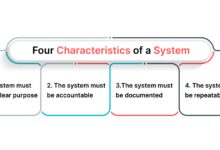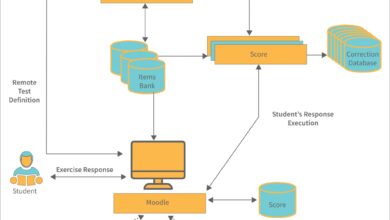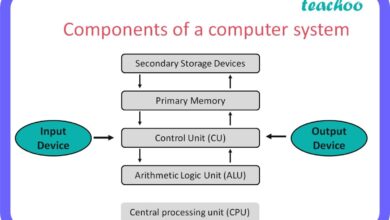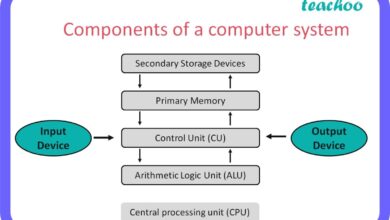System Architecture: 7 Powerful Principles for Ultimate Success
Ever wondered how massive tech systems like Google or Amazon stay up and running flawlessly? It all starts with smart system architecture. This behind-the-scenes blueprint shapes how software, hardware, and networks work together seamlessly. Let’s dive into what makes system architecture so powerful and essential in today’s digital world.
What Is System Architecture and Why It Matters

System architecture is the foundational design of a system, defining its components, relationships, and principles. It’s not just about technology—it’s about strategy, scalability, and long-term success. Whether you’re building a mobile app or managing a global cloud infrastructure, understanding system architecture is non-negotiable.
Defining System Architecture
At its core, system architecture is a high-level structure that outlines how different parts of a system interact. It includes hardware, software, data, communication protocols, and user interfaces. Think of it as the architectural blueprint of a building—but for digital systems.
- It defines the system’s components and their interactions.
- It guides development, deployment, and maintenance.
- It ensures alignment with business goals and technical constraints.
According to the ISO/IEC/IEEE 42010 standard, architecture is the fundamental concepts or properties of a system in its environment embodied in its elements, relationships, and principles of design and evolution.
Key Components of System Architecture
A well-defined system architecture consists of several critical components that work in harmony. These include:
- Hardware: Physical devices like servers, routers, and storage systems.
- Software: Applications, operating systems, and middleware.
- Data: Databases, data flows, and storage mechanisms.
- Networks: Communication channels and protocols (e.g., TCP/IP, HTTP).
- Security: Authentication, encryption, and access control layers.
“Good system architecture is invisible—when it’s done right, users don’t notice it, but when it’s wrong, everything breaks.” — Martin Fowler, Chief Scientist at ThoughtWorks
Types of System Architecture: A Comprehensive Overview
Not all system architectures are created equal. Depending on the use case, scale, and performance needs, different architectural styles are applied. Understanding these types helps in selecting the right approach for your project.
Monolithic Architecture
In a monolithic architecture, all components of an application are tightly coupled and run as a single unit. This was the traditional model for software development.
- Simple to develop and deploy initially.
- Hard to scale and maintain as the system grows.
- Any change requires redeploying the entire application.
While monolithic systems are easier to debug and test in early stages, they become bottlenecks as user demand increases. Companies like Netflix and Amazon have moved away from this model due to scalability limitations.
Microservices Architecture
Microservices break down an application into small, independent services that communicate via APIs. Each service handles a specific business function.
- Highly scalable and flexible.
- Allows teams to develop, deploy, and scale services independently.
- Increases complexity in monitoring and inter-service communication.
For example, Amazon Web Services (AWS) promotes microservices for building resilient cloud-native applications. This architecture powers platforms like Uber and Spotify, where different services manage payments, maps, and music streaming separately.
Event-Driven Architecture
This model revolves around the production, detection, and reaction to events. Components communicate asynchronously through events rather than direct calls.
- Enables real-time processing and responsiveness.
- Ideal for systems requiring high throughput and low latency.
- Commonly used in IoT, financial trading, and notification systems.
Tools like Apache Kafka and AWS Lambda are built to support event-driven designs, allowing systems to react instantly to user actions or sensor inputs.
The Role of System Architecture in Scalability and Performance
One of the most critical functions of system architecture is ensuring that a system can grow and perform under pressure. Poor architecture leads to crashes during peak loads, slow response times, and frustrated users.
Scalability: Vertical vs. Horizontal
Scalability refers to a system’s ability to handle increased load. There are two main approaches:
- Vertical Scaling (Scaling Up): Adding more power (CPU, RAM) to an existing machine.
- Horizontal Scaling (Scaling Out): Adding more machines to distribute the load.
While vertical scaling is simpler, it has physical limits. Horizontal scaling, used by giants like Google and Facebook, allows near-infinite expansion by distributing workloads across thousands of servers.
Performance Optimization Techniques
Effective system architecture incorporates techniques to boost performance:
- Caching: Storing frequently accessed data in memory (e.g., Redis, Memcached).
- Load Balancing: Distributing traffic across multiple servers to prevent overload.
- Database Indexing: Speeding up data retrieval operations.
- Asynchronous Processing: Offloading tasks to background workers (e.g., using message queues like RabbitMQ).
For instance, Google Cloud Architecture emphasizes using global load balancers and regional caching to deliver content quickly to users worldwide.
“Scalability is not a feature—it’s a requirement.” — Werner Vogels, CTO of Amazon
Design Principles for Robust System Architecture
Building a reliable system isn’t just about choosing the right tools—it’s about following time-tested design principles. These principles guide architects in creating systems that are maintainable, scalable, and resilient.
Separation of Concerns
This principle dictates that a system should be divided into distinct sections, each addressing a separate concern. For example, user interface, business logic, and data storage should be handled by different modules.
- Improves code readability and maintainability.
- Reduces the risk of unintended side effects when making changes.
- Facilitates team collaboration by allowing parallel development.
In web development, the Model-View-Controller (MVC) pattern is a classic example of separation of concerns.
Loose Coupling and High Cohesion
Loose coupling means components depend minimally on each other, while high cohesion means each component has a clear, focused purpose.
- Loose coupling enables easier updates and replacements.
- High cohesion improves reliability and testability.
- Together, they make systems more adaptable to change.
Microservices thrive on loose coupling—each service can be updated without affecting others, as long as the API contract remains stable.
Fault Tolerance and Resilience
No system is immune to failure. A robust architecture anticipates failures and includes mechanisms to recover gracefully.
- Implement retries with exponential backoff.
- Use circuit breakers to prevent cascading failures.
- Design for redundancy and failover (e.g., multi-region deployments).
Netflix’s open-source tool Hystrix is a prime example of a resilience library that helps manage latency and fault tolerance in distributed systems.
System Architecture in Cloud Computing
The rise of cloud computing has revolutionized how we design and deploy system architecture. Cloud platforms offer flexible, on-demand resources that enable rapid innovation and global reach.
Cloud-Native Architecture
Cloud-native architecture is designed specifically to leverage cloud environments. It embraces microservices, containers, and dynamic orchestration.
- Uses containers (e.g., Docker) for consistent deployment across environments.
- Leverages orchestration tools like Kubernetes to manage container lifecycles.
- Embraces DevOps practices for continuous integration and delivery (CI/CD).
According to the Cloud Native Computing Foundation (CNCF), cloud-native technologies empower organizations to build and run scalable applications in modern, dynamic environments.
Serverless Architecture
Serverless computing allows developers to run code without managing servers. The cloud provider handles infrastructure provisioning, scaling, and maintenance.
- Reduces operational overhead.
- Scales automatically with demand.
- Pays only for actual execution time.
AWS Lambda, Google Cloud Functions, and Azure Functions are popular serverless platforms. They’re ideal for event-driven tasks like image processing, file conversion, or API backends.
“Serverless doesn’t mean no servers—it means no server management.” — Mike Roberts, Co-Founder of Symphonia
Security in System Architecture
Security is not an afterthought—it must be embedded into the system architecture from the ground up. A single vulnerability can compromise an entire system.
Zero Trust Architecture
Zero Trust is a security model that assumes no user or device is trusted by default, even if inside the network perimeter.
- Requires continuous authentication and authorization.
- Implements least-privilege access controls.
- Uses encryption for data in transit and at rest.
Google’s BeyondCorp is a pioneering implementation of Zero Trust, eliminating the concept of a trusted internal network.
Secure Design Patterns
Architects use proven patterns to enhance security:
- API Gateways: Centralize authentication, rate limiting, and logging for APIs.
- Web Application Firewalls (WAF): Protect against common threats like SQL injection and XSS.
- Secrets Management: Use tools like HashiCorp Vault or AWS Secrets Manager to store credentials securely.
Integrating security into CI/CD pipelines through automated scanning (SAST/DAST) ensures vulnerabilities are caught early.
Emerging Trends in System Architecture
Technology evolves rapidly, and so does system architecture. Staying ahead means embracing new paradigms and tools that redefine what’s possible.
Edge Computing Architecture
Edge computing brings computation and data storage closer to the source of data generation, reducing latency and bandwidth usage.
- Crucial for IoT, autonomous vehicles, and real-time analytics.
- Reduces dependency on centralized cloud data centers.
- Enables faster decision-making at the edge (e.g., smart cameras detecting anomalies).
Companies like AWS (with AWS Greengrass) and Microsoft (Azure IoT Edge) are leading the charge in edge architecture solutions.
AI-Driven Architecture
Artificial intelligence is now being used to optimize system architecture itself. AI can predict traffic patterns, auto-scale resources, and detect anomalies.
- Google’s AI-powered load balancing adjusts traffic routing based on real-time performance.
- AI-driven observability tools like Datadog and New Relic use machine learning to detect system issues before they impact users.
- AutoML and neural architecture search help design efficient models for specific hardware.
This trend marks a shift from static designs to adaptive, self-optimizing systems.
Quantum-Ready Architecture
While still in early stages, quantum computing poses both opportunities and threats to current system architectures.
- Quantum computers could break traditional encryption (e.g., RSA).
- Organizations are exploring post-quantum cryptography to future-proof their systems.
- Hybrid architectures combining classical and quantum processors are being tested.
NIST is currently standardizing post-quantum cryptographic algorithms to prepare for this transition.
Best Practices for Designing System Architecture
Creating a successful system architecture isn’t just about theory—it’s about applying best practices that have been proven in real-world scenarios.
Start with Requirements Gathering
Before writing a single line of code, understand the functional and non-functional requirements:
- What features must the system support?
- What are the expected user loads and response times?
- What are the compliance and security needs?
Use techniques like user stories, use case diagrams, and SLA definitions to capture these requirements clearly.
Document Everything
A well-documented architecture is essential for onboarding, maintenance, and audits.
- Create architecture decision records (ADRs) to explain key choices.
- Use diagrams (e.g., UML, C4 model) to visualize components and flows.
- Keep documentation updated as the system evolves.
The C4 Model by Simon Brown provides a structured way to document software architecture at different levels of abstraction.
Iterate and Refactor
Architecture isn’t set in stone. As requirements change and technology advances, so should your design.
- Conduct regular architecture reviews.
- Refactor components that become bottlenecks.
- Adopt evolutionary architecture principles that allow gradual change.
Netflix continuously refactors its architecture, moving from monolithic to microservices and now exploring serverless and edge computing.
What is the difference between system architecture and software architecture?
System architecture is broader and includes hardware, software, networks, and data, while software architecture focuses only on the structure of software components and their interactions. System architecture encompasses software architecture as one of its layers.
Why is system architecture important for startups?
For startups, a solid system architecture ensures scalability, reduces technical debt, and supports rapid iteration. It prevents costly rewrites later and builds investor confidence in the product’s long-term viability.
How do you evaluate the quality of a system architecture?
Quality is assessed through non-functional requirements like performance, scalability, security, maintainability, and cost-efficiency. Tools like architecture evaluation methods (e.g., ATAM) help identify risks and trade-offs early.
Can system architecture impact user experience?
Absolutely. A poorly designed architecture can lead to slow load times, downtime, and bugs—all of which degrade user experience. Conversely, a well-architected system ensures responsiveness, reliability, and seamless functionality.
What tools are used in system architecture design?
Common tools include diagramming software (e.g., Lucidchart, Draw.io), modeling tools (e.g., Enterprise Architect), and cloud architecture designers (e.g., AWS Architecture Designer, Azure Portal). Additionally, ADR tools and CI/CD platforms support implementation and documentation.
System architecture is the invisible force that powers the digital world. From monolithic to microservices, from cloud to edge, the choices we make in design determine whether systems thrive or fail. By embracing core principles like scalability, security, and resilience, and staying ahead of trends like AI and quantum computing, architects can build systems that are not just functional, but future-proof. Whether you’re launching a startup or managing enterprise infrastructure, investing in strong system architecture is the ultimate key to long-term success.
Further Reading:









